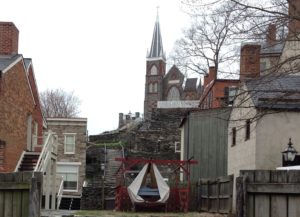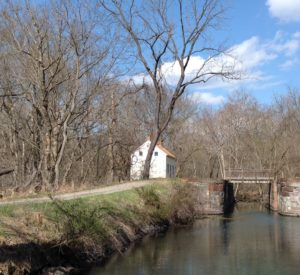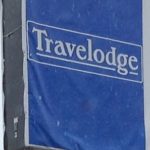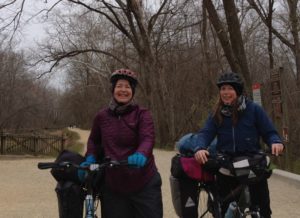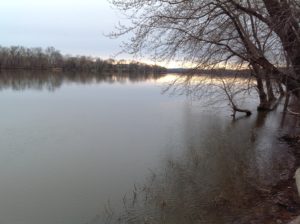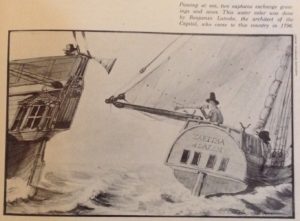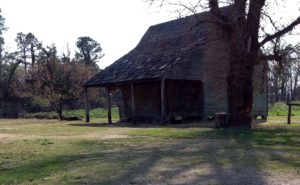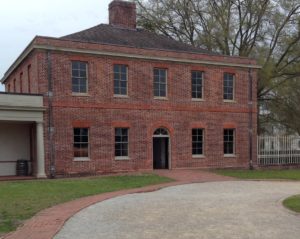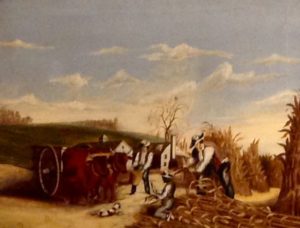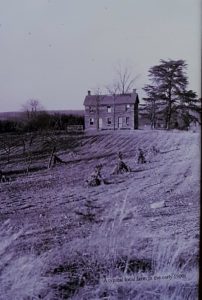I knew all along that on the first leg of the journey, by following the C&O Canal Trail, Angela and I wouldn’t be on the official overland road out of Baltimore of the early 1800s.
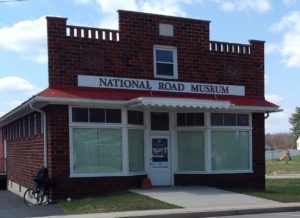 Researching from home, I hit on the “National Road Museum” about 8 miles distant from the Potomac at Shepherdstown, WV that would enlighten me more about what led to the Road’s construction (which began in 1811). But the website here was misleading. Actually, this building is the future home of the National Road Museum, which won’t open until the fall of 2018.
Researching from home, I hit on the “National Road Museum” about 8 miles distant from the Potomac at Shepherdstown, WV that would enlighten me more about what led to the Road’s construction (which began in 1811). But the website here was misleading. Actually, this building is the future home of the National Road Museum, which won’t open until the fall of 2018.
 No worries, we didn’t bike all that way. We’d spent the night at the luxurious Bavarian Inn, and Angela talked with an employee there who convinced management to let him load our bikes into a hotel van and shuttle us to Boonsboro, Maryland. After exploring the historic town (not the Kentucky Boonesboro — this one was settled around 1776 by William Boone, a relation of Daniel Boone), we bicycled on Rte 68 for Williamsport, to reach the C&O Canal Trail once more.
No worries, we didn’t bike all that way. We’d spent the night at the luxurious Bavarian Inn, and Angela talked with an employee there who convinced management to let him load our bikes into a hotel van and shuttle us to Boonsboro, Maryland. After exploring the historic town (not the Kentucky Boonesboro — this one was settled around 1776 by William Boone, a relation of Daniel Boone), we bicycled on Rte 68 for Williamsport, to reach the C&O Canal Trail once more.
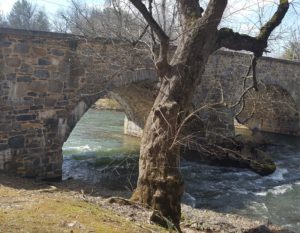 Going off trail was picturesque, difficult, and dangerous. Such gorgeous country in this southwest corner of Maryland, gently rolling hills and farms, the Blue Ridge and Appalachian mountains bordering the edges all around. We descended into the Antietam Creek valley, stopping at a park by the river long enough to witness an expert fly fisherman nab a glistening brook trout.
Going off trail was picturesque, difficult, and dangerous. Such gorgeous country in this southwest corner of Maryland, gently rolling hills and farms, the Blue Ridge and Appalachian mountains bordering the edges all around. We descended into the Antietam Creek valley, stopping at a park by the river long enough to witness an expert fly fisherman nab a glistening brook trout.
The Antietam Civil War battlefield gets its name from this meandering creek. In researching 18th century history, I discovered another terrible battle also occurred at Mount Antietam in 1736, a fatal skirmish between Catawba and Delaware hunting bands. On a sunny afternoon on the creek banks, it seemed impossible that either of those terrible events ever happened.
Meanwhile, what goes down must go up. Wending by bicycle out of the creek valley, Route 68 rose, dipped, rose and dipped, for twelve miles. It was also a narrow road, with no shoulder, making me very glad we were bicycling in broad daylight, and that more of the level C&O Trail lay in our future.

